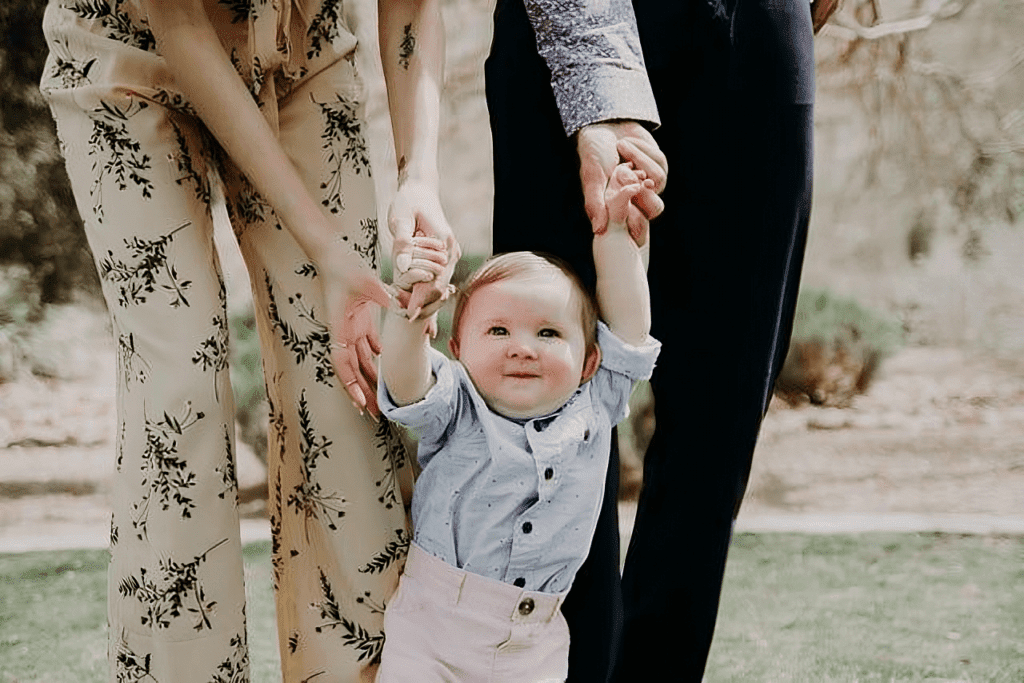Last updated on December 18th, 2024 at 05:35 am
- 1. Identifying Emotional Abuse — Learn How To Recognize Emotional Abuse In Its Many Forms.
- 2. Breaking The Cycle — Steps To Leave An Abusive Relationship.
- 3. Seeking Support — Find A Counselor, Support Group, Or Friend You Can Trust.
- 4. Understanding Your Triggers — Pinpoint Situations/people That Re-traumatize You.
- 5. The Power of “No”: Setting Boundaries for Self-Protection
- 6. Speaking Up For Your Needs — Learn Assertive Communication Skills.
- 7. Managing Anger — Release Resentment In Healthy Ways.
- 8. Practicing Self-care — Make Time For Activities That Nourish You.
- 9. Cultivating Self-compassion — Be Kind To Yourself On The Journey To Healing.
- 10. Embracing Vulnerability — Open Up Carefully To Rebuild Trust.
- 11. Forgiving Your Abuser — How To Forgive Without Condoning Abuse.
- 12. Accepting What You Can’t Control — Focus On Your Own Growth.
- 13. Quieting Your Inner Critic — Challenge Negative Self-talk.
- 14. Owning Your Worth — Stop Imposter Syndrome In Its Tracks.
- 15. Setting Relationship Standards — Know Your Non-negotiables.
- 16. Developing Emotional Awareness — Become Attuned To Your Feelings.
- 17. Communicating Needs Assertively — Ask For What You Want And Need.
- 18. Managing Conflict — Have Difficult Talks Calmly.
- 19. Establishing Trust — Take Small Risks To Build Intimacy.
- 20. Healing From Gaslighting — Rebuild Your Perception Of Reality.
- 21. Processing Guilt And Shame — Let Go Of False Culpability.
- 22. Standing Up To Manipulation — Recognize And Defuse Coercion.
- 23. Cultivating Self-trust — Rely On Your Inner Wisdom.
- 24. Practicing Mindfulness — Manage Anxiety Through Meditation.
- 25. Setting Healthy Boundaries — Protect Your Time And Energy.
- 26. Developing Coping Skills — Manage Stress And Regulate Emotions.
- 27. Embracing Self-love — Treat Yourself With Kindness And Care.
- 28. Building Self-Esteem — Create A Positive Self-narrative.
- 29. Finding Safe Community — Connect With Other Survivors.
- 30. Exploring Healthy Relationships — Learn Positive Relationship Skills.
- 31. Planning A Fulfilling Life — Pursue Dreams For Yourself.
- 32. Ongoing Healing Work — Make Processing The Abuse A Lifelong Journey.
- 33. Thriving After Abuse — Envision The Meaningful Life You Deserve.
- Recognizing Hidden Signs of Abuse
- Breaking Free from Guilt Trips
- Understanding Trauma Bonding
- Helping a Friend in an Abusive Relationship
- The Impact of Narcissistic Parenting
- Creating Your Narcissistic Abuse Recovery Toolkit
- Bonus Tips
- 34. Recognizing the Signs of Abuse
- Recognizing Different Types of Abuse
- 35. Creating a Healthy Dating Relationship
- Steps Towards Deeper Healing
- 36. Navigating Psychological and Physical Abuse
- Understanding Sexual Abuse and Its Impact
- 37. Identifying the Right Therapy for People Suffering Abuse
- Seeking Help from Domestic Violence Shelters
- 38. Handling Emotional Issues After Abuse
- 39. Overcoming the Fog of Abuse
- 40. Setting a Time Table for Healing
- 41. Avoiding Toxic and Unhealthy Relationships
- 42. Impact of Spiritual Abuse
- Moving From Emotional Wounds to a Healthy Life
- 43. Addressing Concerns of Abuse in Relationships
- Seeking Guidance for Healthy Personal Growth
- 44. Differentiating Between Normal Relationships and Abuse
- 45. Handling Emotions of Upsetness in Healing
- Understanding the Role of Ignorant People in Perpetuating Abuse
- 46. Rebuilding After Sexual Abuse
- 47. Impact of Abusive Person on Victim’s Self-worth
- 48. The Healing Power of Self-compassion
- Recognizing the Consequences of Abuse on Future Relationships
- 49. How to Spot Major Issues in Relationships
- Finding Perfect Therapy for Deeper Recovery
- Recognizing the Damage of Bad Behavior Over Time
- 50. Overcoming Heart Wounds from Abuse
- Avoiding Toxic Relationships for Long-term Happiness
- 51. Conquering Emotional Issues for a Better Future
- The Importance of Taking a Bold Step Towards Recovery
- Final Thoughts
- Frequently Asked Questions
- How Can I Recognize Signs of Emotional Abuse in a Relationship?
- What Are Effective Steps Towards Healing After Experiencing Emotional Abuse?
- How Does Emotional Abuse Differ From Physical Abuse?
- How Long Is the Healing Process From Emotional Abuse?
- How Can One Set Personal Boundaries to Protect Against Emotional Abuse?
- How Can Therapy Help Heal Emotional Wounds Caused by Psychological Abuse?
- What Are Some Warning Signs of Emotional Abuse to Watch For?
- How Can Someone Overcome the Fog of Abuse After Leaving an Abusive Relationship?
- What Is Spiritual Abuse, and How Does It Affect the Healing Process?
- How Can Emotional Abuse Impact Intimate Relationships in the Long Term?
- What Are the Effects of Emotional Abuse on Self-Esteem?
- What Are Common Myths About Emotional Abuse?
- How Can One Regain Trust in Relationships After Experiencing Emotional Abuse?
- What Are the Consequences of Abuse on Emotional Health?
- How Can One Support an Emotional Abuse Survivor?
- How Can Personal Growth Be Fostered After Emotional Abuse?
- How Does Verbal Abuse Contribute to Emotional Damage?
- What Are Some Healing Techniques for Emotional Abuse Survivors?
- Can Emotional Abuse Lead to Physical Symptoms?
- How Can Someone Differentiate Between Normal Relationship Problems and Emotional Abuse?
- How Can Emotional Abusers Be Held Accountable for Their Actions?
Emotional abuse leaves deep wounds that can impact every part of your life. The scars may run so deep that you barely recognize yourself anymore. But there is hope. Healing is possible with support and a commitment to your own growth.
If you’re ready to break free from the effects of emotional abuse, this post provides a caring roadmap to reclaim your freedom and joy. We’ll explore what emotional abuse looks like, so you can spot it. Then we’ll dig into concrete steps to rebuild your self-worth, set boundaries, let go of anger safely, speak up for yourself, and more.
Whether the abuse happened recently or years ago, these tips can help you make sense of your pain, grow stronger, and create a better future. You have more strength inside you than you realize.
Let’s tap into that power and start your journey toward healing. Let’s discover 33 steps to heal from emotional abuse. Learn practical strategies to regain your confidence, build resilience, and reclaim your emotional well-being.
1. Identifying Emotional Abuse — Learn How To Recognize Emotional Abuse In Its Many Forms.
Emotional abuse uses words and actions to control, scare, or manipulate someone. It can be hard to spot because it’s not always obvious. Abuse often happens bit by bit over time.
Here are some signs that might mean you’re facing emotional abuse:
- Your partner always puts down your accomplishments
- They criticize everything about you – how you look, dress, talk, and act
- They nitpick at little things and make unreasonable demands
- They call you names or put you down
- They make promises but rarely keep them
- They break promises, leaving you feeling let down again and again
Recognizing these patterns is the first step to breaking free. You’re not alone, and you don’t deserve to be treated this way.
2. Breaking The Cycle — Steps To Leave An Abusive Relationship.
Many people stay in abusive relationships for different reasons. But it’s important to remember – the abuse is never your fault. You don’t have to face this alone. There is help available.
If you feel like things are out of control, take some time to talk with someone who can guide you. Reach out to a trusted friend or family member. Tell them what’s going on. They may be able to offer support or ideas to make things better.
Leaving an abusive situation takes courage. But you have that strength inside you. Take it one day at a time. Each small step gets you closer to freedom.


3. Seeking Support — Find A Counselor, Support Group, Or Friend You Can Trust.
Having support is key to healing from emotional abuse. You need someone who will listen without judging and validate your feelings. This person should be trustworthy and caring.
Here are some ways to find support:
- Ask friends or family who they’d recommend for counseling
- Search online for local therapists (make sure they’re licensed professionals)
- Look for support groups in your area for abuse survivors
- Reach out to a domestic violence hotline for resources
4. Understanding Your Triggers — Pinpoint Situations/people That Re-traumatize You.
Recognizing your triggers is an important part of healing. Triggers are things that bring back painful memories or emotions tied to the abuse.
For example, certain words or situations might cause a flashback. They can bring back all the hurt you felt before. Pay attention to what sets off strong emotions in you. This helps you avoid those triggers or be ready to handle them.
5. The Power of “No”: Setting Boundaries for Self-Protection
Learning to say “no” and set limits is a crucial skill. But it can be really hard, especially if your abuser got away with anything they wanted for a long time.
If you’ve been punished for standing up for yourself before, saying “no” might feel scary. Your abuser might get angry or upset when you start setting boundaries. But remember – you have the right to say no.
Here are some tips for saying no:
- Stay calm and firm (but not aggressive)
- Don’t make excuses or blame yourself
- Use confident body language
- Be ready for possible backlash, like yelling or punishment
6. Speaking Up For Your Needs — Learn Assertive Communication Skills.
You have needs, and it’s okay to express them. Learning to speak up for yourself in a healthy way is key to healing. This means saying “no” when you don’t want something, asking for what you want, and sharing your feelings clearly.
If you were taught that having needs is selfish, this might feel strange at first. But it’s so important. Being able to express your needs protects you from further abuse and gives you more control over your life.


7. Managing Anger — Release Resentment In Healthy Ways.
Feeling angry after abuse is normal. But it’s important to handle that anger in healthy ways. Remember – the abuser has no right to take their anger out on you. They are the problem, not you.
Here are some healthy ways to deal with anger:
- Write in a journal
- Exercise or do physical activities
- Talk to a therapist or counselor
- Practice deep breathing or meditation
- Join a support group for abuse survivors
8. Practicing Self-care — Make Time For Activities That Nourish You.
Taking care of yourself is not selfish – it’s necessary for healing. Make time for activities that nourish your body, mind, and soul.
Some ideas for self-care:
- Get enough sleep
- Eat healthy foods
- Exercise regularly
- Drink plenty of water
- Spend time in nature
- Do hobbies you enjoy
- Connect with supportive friends


9. Cultivating Self-compassion — Be Kind To Yourself On The Journey To Healing.
Many people who face emotional abuse feel like they need to be perfect to make their abuser happy. This is a lie that keeps you stuck in the abuse cycle.
The truth is, no one is perfect. Everyone makes mistakes. You don’t have to try so hard to please your abuser. You’ll never succeed anyway, because the problem is with them, not you.
Instead, focus on being kind to yourself as you heal. This might feel strange at first if you’re not used to it. But self-compassion is a powerful tool for healing. Treat yourself with the same kindness you’d show a good friend.
10. Embracing Vulnerability — Open Up Carefully To Rebuild Trust.
When you’ve been hurt, it can be scary to trust again. But to heal fully, you need to open up to others. This doesn’t mean trusting everyone right away. Start small and be careful about who you let in.
Here are some tips for rebuilding trust:
- Take it slow – don’t rush into new relationships
- Pay attention to how people treat you
- Trust your gut feelings
- Set clear boundaries and see if people respect them
- Look for consistency in words and actions
11. Forgiving Your Abuser — How To Forgive Without Condoning Abuse.
Forgiving your abuser doesn’t mean what they did was okay. It doesn’t mean you have to let them back into your life. Forgiveness is about letting go of anger and resentment for your own peace.
Here’s what forgiveness can do for you:
- Free you from being controlled by negative emotions
- Help you move forward with your life
- Reduce stress and improve your health
- Allow you to focus on your own growth and happiness
12. Accepting What You Can’t Control — Focus On Your Own Growth.
You can’t control your abuser or their behavior. But you can control how you respond to them and their actions. If something they do upsets you, take a step back. Ask yourself if there’s anything you can change about the situation.
If not, let it go. Focus your energy on healing in other ways instead. Put your effort into things you can control, like:
- Your own thoughts and actions
- How you treat yourself
- The people you choose to have in your life
- Your goals and dreams for the future


13. Quieting Your Inner Critic — Challenge Negative Self-talk.
The inner critic is that voice in your head that puts you down. It might tell you you’re a failure or that you don’t deserve good things. This voice often gets louder after emotional abuse.
Here’s how to challenge your inner critic:
- Notice when it’s talking – be aware of negative self-talk
- Question if it’s really true – look for evidence that proves it wrong
- Replace negative thoughts with kinder ones
- Write down positive things about yourself
- Create a mantra or affirmation to use when the critic gets loud
14. Owning Your Worth — Stop Imposter Syndrome In Its Tracks.
After emotional abuse, you might feel like an imposter in your own life. You might think you don’t deserve good things. But here’s the truth: You are worthy of love, respect, and happiness.
To build up your sense of worth:
- Surround yourself with people who see your value
- Celebrate your accomplishments, big and small
- Accept compliments instead of brushing them off
- Keep a list of your strengths and good qualities
- Do things that make you feel capable and strong
15. Setting Relationship Standards — Know Your Non-negotiables.
When healing from abuse, it’s important to know what you want and need in future relationships. Some things should never be compromised, even if it means being alone for a while.
Think about what’s most important to you in a relationship. This might include:
- Mutual respect
- Open and honest communication
- Emotional support
- Trust and faithfulness
- Shared values or goals
Write down your “non-negotiables” – the things you absolutely need in a healthy relationship. This helps you spot red flags early and avoid getting into another abusive situation.


16. Developing Emotional Awareness — Become Attuned To Your Feelings.
Being able to identify your feelings is crucial for healing. It helps you stay well and avoid falling back into unhealthy patterns.
Emotions can show up in different ways. For example:
- Anger might feel like irritation or impatience
- Sadness might look like boredom
- Anxiety could feel like restlessness
- Fear might show up as shyness
- Shame might feel like guilt for no reason
17. Communicating Needs Assertively — Ask For What You Want And Need.
Learning to express your needs clearly is an important skill. It means stating what you want without blaming or judging the other person.
For example, instead of saying “Why don’t we ever spend time together?”, try “I would like to spend more time with you on weekends.”
Here are some tips for assertive communication:
- Use “I” statements to express your feelings and needs
- Be specific about what you want
- Stay calm and respectful
- Listen to the other person’s response
- Be willing to compromise when appropriate


18. Managing Conflict — Have Difficult Talks Calmly.
Conflict is normal in any relationship. But when you’ve faced abuse, it can feel scary. Learning to handle disagreements calmly is an important skill.
Here are some tips for managing conflict:
- Take deep breaths to stay calm
- Use “I” statements instead of blaming
- Listen to understand, not just to respond
- Focus on the issue, not personal attacks
- Take breaks if things get too heated
- Look for solutions that work for both people
19. Establishing Trust — Take Small Risks To Build Intimacy.
Trust is built slowly, through many small moments. To build trust in relationships:
- Share your feelings a little at a time
- Be honest, even when it’s hard
- Follow through on what you say you’ll do
- Respect the other person’s boundaries
- Ask for what you need clearly
- Show appreciation for the other person
20. Healing From Gaslighting — Rebuild Your Perception Of Reality.
Gaslighting is when someone makes you doubt your own memories or perceptions. It’s a common tactic in emotional abuse. Healing from gaslighting takes time and support.
Here are some steps to rebuild your trust in yourself:
- Keep a journal to record events and your feelings
- Talk to trusted friends about your experiences
- Notice when you start to doubt yourself
- Remind yourself that your feelings and memories are valid
- Seek therapy to work through confusion and self-doubt
21. Processing Guilt And Shame — Let Go Of False Culpability.
Abuse often leaves victims feeling guilty or ashamed. But the truth is, the abuse was not your fault. You didn’t deserve it, and you couldn’t have prevented it.
To let go of false guilt:
- Challenge thoughts that blame you for the abuse
- Remind yourself that the abuser made their own choices
- Write down reasons why you’re not to blame
- Talk to a therapist about your feelings of guilt
- Practice self-compassion and forgiveness towards yourself
22. Standing Up To Manipulation — Recognize And Defuse Coercion.
Manipulation is when someone uses tricks to get what they want from you. Coercion is using force or threats to make you do something. Both are forms of control.
Here are some signs of manipulation and coercion:
- Using guilt trips to make you feel bad
- Threatening to hurt themselves if you don’t comply
- Making you doubt your own memory or perception (gaslighting)
- Using silent treatment to punish you
- Making you feel like you owe them something
23. Cultivating Self-trust — Rely On Your Inner Wisdom.
Learning to trust yourself is a big part of healing. You were born with everything you need inside you. You have the ability to be kind and understanding because those qualities are part of being human.
To build self-trust:
- Listen to your gut feelings
- Make small decisions and follow through
- Notice when things go well because of choices you made
- Forgive yourself when you make mistakes
- Spend time getting to know yourself through journaling or quiet reflection
24. Practicing Mindfulness — Manage Anxiety Through Meditation.
Mindfulness and meditation can help calm anxiety and reduce stress. These practices teach you to focus on the present moment instead of worrying about the past or future.
Here’s a simple mindfulness exercise to try:
- Sit comfortably and close your eyes
- Focus on your breath moving in and out
- When your mind wanders, gently bring it back to your breath
- Do this for 5-10 minutes each day


25. Setting Healthy Boundaries — Protect Your Time And Energy.
Boundaries are rules that define what’s okay and not okay in your relationships. They protect your physical and emotional well-being.
Some examples of healthy boundaries:
- Saying no to things you don’t want to do
- Asking for space when you need it
- Not letting others touch you without permission
- Keeping your personal information private
- Spending time alone when you need to recharge
26. Developing Coping Skills — Manage Stress And Regulate Emotions.
Having good coping skills helps you handle stress and strong emotions. Everyone’s coping tools are different, but here are some to try:
- Deep breathing exercises
- Progressive muscle relaxation
- Journaling
- Art or creative expression
- Talking to a supportive friend
- Physical exercise
- Listening to music
- Spending time in nature
27. Embracing Self-love — Treat Yourself With Kindness And Care.
Ways to practice self-love:
- Speak to yourself kindly, even when you make mistakes
- Take care of your physical health
- Set aside time for activities you enjoy
- Celebrate your achievements, big and small
- Forgive yourself for past mistakes
- Accept compliments graciously
- Surround yourself with positive, supportive people
Remember, you are worthy of love and respect, especially from yourself. Rebuilding your sense of self is a crucial part of healing from emotional abuse.
28. Building Self-Esteem — Create A Positive Self-narrative.
Your self-esteem may have taken a hit from emotional abuse. Building it back up takes time and effort, but it’s worth it. Here’s how to start:
- Challenge negative thoughts about yourself
- Make a list of your strengths and good qualities
- Set small, achievable goals and celebrate when you reach them
- Learn a new skill or hobby
- Help others – it can boost your own self-worth
- Spend time with people who appreciate and value you
29. Finding Safe Community — Connect With Other Survivors.
Connecting with others who have been through similar experiences can be incredibly healing. It reminds you that you’re not alone and gives you a chance to share your story.
Here are some ways to find community:
- Join a support group for abuse survivors
- Attend workshops or seminars on healing from abuse
- Participate in online forums or communities for survivors
- Volunteer for organizations that help abuse victims
- Consider group therapy sessions


30. Exploring Healthy Relationships — Learn Positive Relationship Skills.
After experiencing abuse, it’s important to learn what healthy relationships look like. This knowledge helps you avoid future abusive situations and build positive connections.
Key elements of healthy relationships include:
- Mutual respect and trust
- Open, honest communication
- Support for each other’s goals and dreams
- The ability to disagree without fear
- Equal give and take
- Respect for each other’s boundaries
- A sense of safety and security
As you heal, pay attention to how people treat you. Recognize the signs of narcissistic abuse to avoid falling into similar patterns in the future.
31. Planning A Fulfilling Life — Pursue Dreams For Yourself.
Emotional abuse can make you forget about your own dreams and goals. Part of healing is rediscovering what you want out of life. Here’s how to start:
- Think about what you enjoyed before the abuse
- Make a list of things you’ve always wanted to try
- Set small, achievable goals for yourself
- Take a class or learn a new skill
- Volunteer for a cause you care about
- Travel to new places, even if it’s just a day trip
- Start a hobby or creative project
32. Ongoing Healing Work — Make Processing The Abuse A Lifelong Journey.
Healing from emotional abuse isn’t a one-time event. It’s an ongoing process that continues throughout your life. Here are some ways to keep growing:
- Keep a journal to track your progress and feelings
- Regularly check in with yourself about your emotional state
- Continue therapy or counseling as needed
- Read books about healing from abuse
- Attend workshops or retreats focused on healing
- Practice self-care and self-compassion daily
- Be patient with yourself – healing takes time
33. Thriving After Abuse — Envision The Meaningful Life You Deserve.
Surviving abuse shows incredible strength. Now it’s time to move beyond surviving to thriving. Imagine the life you want to create for yourself:
- What kind of relationships do you want?
- What work or activities bring you joy?
- How do you want to spend your free time?
- What values are most important to you?
- What impact do you want to have on the world?
Recognizing Hidden Signs of Abuse
Sometimes, abuse can be subtle and hard to spot. Learning to recognize hidden signs of narcissistic abuse can help you protect yourself in the future. Some less obvious signs include:
- Constant criticism disguised as “jokes”
- Using your insecurities against you
- Making you feel guilty for having needs
- Invalidating your feelings
- Shifting blame onto you for their actions
- Using silent treatment as punishment
- Making you doubt your own memory or perception


Breaking Free from Guilt Trips
Guilt trips are a common tactic used by abusers to control their victims. Learning to spot and stop narcissistic guilt trips is an important part of healing. Here’s how:
- Recognize when someone is trying to make you feel guilty
- Remember that you’re not responsible for other people’s feelings
- Set clear boundaries about what you will and won’t do
- Practice saying no without explaining or apologizing
- Remind yourself that it’s okay to put your needs first
Understanding Trauma Bonding
Trauma bonding is a psychological response to abuse that can make it hard to leave an abusive relationship. It’s a strong emotional attachment between an abused person and their abuser.
Signs of trauma bonding include:
- Feeling loyal to your abuser despite the harm they cause
- Making excuses for their behavior
- Feeling unable to leave the relationship
- Defending the abuser to others
- Feeling grateful for small acts of kindness from the abuser
Helping a Friend in an Abusive Relationship
If you know someone who might be in an abusive relationship, you may wonder how to help. Here are some ways to support a friend who’s facing narcissistic abuse:
- Listen without judgment
- Believe their experiences
- Offer emotional support
- Help them create a safety plan if needed
- Provide resources about abuse and healing
- Respect their decisions, even if you don’t agree
- Take care of your own emotional health too
The Impact of Narcissistic Parenting
Childhood abuse from narcissistic parents can have long-lasting effects on adult relationships. If you grew up with a narcissistic parent, you might:
- Have trouble setting boundaries
- Struggle with self-esteem
- Find it hard to trust others
- Feel responsible for other people’s feelings
- Have a hard time identifying your own needs and wants
Creating Your Narcissistic Abuse Recovery Toolkit
As you heal, it’s helpful to have a set of tools and resources you can turn to. Your recovery toolkit might include:
- Coping strategies for tough moments
- Contact information for your support network
- Inspiring quotes or affirmations
- Grounding techniques for anxiety
- A list of your strengths and accomplishments
- Resources like books or websites about healing
- Self-care ideas for when you’re feeling down


Bonus Tips
34. Recognizing the Signs of Abuse
Emotional abusers can inflict psychological abuse that might leave lasting damage. Recognizing the warning signs is essential to take the first step towards personal growth.
Some behaviors may seem harmless but could be a subtle form of abuse meant to control or demean you. Identifying these signs early can help you understand your situation better.
Recognizing Different Types of Abuse
Abusive behavior manifests in various forms, from verbal abuse to spiritual abuse, each leaving unique scars. Abuse is not limited to physical harm; it includes emotional and psychological manipulation too.
A mental abuser may use tactics like gaslighting or isolation, creating the fog of abuse that can confuse and paralyze victims. It is important to know these tactics to recognize the abuse and seek help.
Knowing the sign of abuse is crucial for understanding your situation. Taking the bold step toward safety can mean reclaiming control of your life.
35. Creating a Healthy Dating Relationship
Healing involves building healthy relationships that are built on respect and care. A supportive partner values your individuality and respects your boundaries.
A healthy dating relationship respects your boundaries, avoiding manipulation or control. It is vital to recognize the characteristics of a healthy relationship and strive to maintain those values.
Establishing personal boundaries helps differentiate between normal intimate relationships and those that lead to toxic relationships. Boundaries are a protective measure to ensure respect and understanding.
Steps Towards Deeper Healing
The process of healing from emotional abuse involves more than just leaving an abusive situation. It includes rebuilding one’s sense of worth and gaining emotional strength.
It requires deeper healing that addresses the emotional wounds inflicted over a period of time. Healing is not linear, and patience is necessary for the journey.
Focusing on your journey of healing can help release the pain of the past. Creating space for positive experiences can accelerate the healing process.


36. Navigating Psychological and Physical Abuse
The healing process is complex when both psychological abuse and physical abuse have been experienced. Psychological trauma often impacts survivors for longer periods than physical injuries.
The consequences of abuse are not merely physical but often have a profound emotional and psychological impact. This trauma can continue affecting entire lives if left unaddressed.
Recognizing that abuse isn’t always visible helps identify emotional abusers who use words instead of fists. Knowing this can empower victims to seek the help they need.
Understanding Sexual Abuse and Its Impact
Sexual assault or sexual abuse is a serious form of abuse that leaves lasting emotional wounds. The trauma from sexual abuse often remains in the mind long after physical scars have healed.
Victims, often innocent victims, may deal with emotional issues for years. Therapy is essential to untangle the emotions of upsetness and pain associated with their experiences.
37. Identifying the Right Therapy for People Suffering Abuse
Choosing the perfect therapy for an emotional abuse survivor can be challenging. Finding a therapeutic approach that fits each individual is critical for recovery.
Different types of therapy for people who have suffered abuse exist, from cognitive-behavioral therapy to support groups. Survivors should explore different options to find what works best for them.
Each survivor requires a personalized approach, as emotional wounds vary from person to person. This tailored approach can provide the best environment for healing and growth.
Seeking Help from Domestic Violence Shelters
A domestic violence shelter can provide safety and access to resources to those experiencing abuse. These shelters provide a supportive environment for those seeking refuge.
Seeking refuge at a shelter is not a sign of weakness but a step towards healing and protection. Many shelters also offer emotional support and resources to help victims regain stability.
The support found in these shelters can become the turning point that helps to begin the healing power of recovery. They provide the tools necessary to rebuild one’s life after escaping abuse.
38. Handling Emotional Issues After Abuse
Abuse often leaves emotional issues that are as painful as physical scars. Emotional trauma can impact self-esteem and the ability to trust.
A compassionate person and a therapist can help in dealing with these issues. Seeking professional help is often the best step toward understanding and managing these emotions.
Emotional abuse survivors often feel guilt and self-blame. However, with the right support, the power of healing can break this cycle and lead to self-forgiveness.
39. Overcoming the Fog of Abuse
Living through abuse can feel like being in a fog—often called the fog of abuse. This fog makes it challenging to see reality clearly.
The fog can prevent survivors from making the best decisions for themselves. It takes time and clarity to come out of it, but once the healing process begins, the fog slowly lifts.
As the fog lifts, survivors regain their strength. They can focus on their happy life and start building a future without fear.


40. Setting a Time Table for Healing
There is no strict time limit or timetable for recovering from emotional trauma. Each individual’s journey to healing is unique.
Healing takes time, and it happens at the pace that is right for each individual. It is essential to honor your timeline without comparing it to others.
There isn’t a single time that is the right or wrong time to feel healed. Taking things step by step, without rushing the journey of healing, is the best approach.
41. Avoiding Toxic and Unhealthy Relationships
One essential aspect of healing is avoiding unhealthy relationships that could lead back to toxic relationships. Building healthy boundaries is a key component of this process.
Learning to recognize bad behavior, hurtful behavior, and manipulative tactics is crucial. Awareness of these signs can ensure that you do not become a target of abuse again.
You deserve love that nurtures you and makes you feel valued as a healthy person. Surround yourself with people who uplift you rather than tear you down.
42. Impact of Spiritual Abuse
Spiritual abuse can often be overlooked but is another destructive form of abuse. It involves manipulation of beliefs to control a person, creating confusion and mistrust.
It can create long-term effects on both an individual’s faith and their sense of self-worth. Spiritual abuse can erode one’s relationship with their spirituality, making the process of healing much more complex.
This form of mistreatment can greatly hinder the healing process, especially when trust in one’s spirituality has been violated. Addressing these concerns is necessary for achieving complete healing.
Moving From Emotional Wounds to a Healthy Life
Every survivor of abuse deserves a healthy person in their life who encourages and supports them through the healing journey. Whether it’s a partner, friend, or counselor, this support is crucial.
Support from loved ones forms the basis for a normal relationship where mutual respect is paramount. It ensures that survivors feel heard, loved, and valued.
Addressing heart wounds and allowing them to heal is key to transitioning from a life filled with pain to a happy life. Emotional recovery paves the way to a healthier and more fulfilling future.
43. Addressing Concerns of Abuse in Relationships
Recognizing concerns of abuse in relationships is critical for maintaining a safe and loving environment. Controlling behaviors or manipulation must be identified and addressed.
Be vigilant of these warning signs that the relationship may be unhealthy. Early intervention can prevent further emotional damage.
Seeking Guidance for Healthy Personal Growth
Engaging in counseling or self-development activities helps boost personal growth. It provides a clearer understanding of one’s own value and aids in overcoming trauma.
Abuse survivors can benefit from guidance to regain a sense of worth. By engaging in self-improvement, they can reclaim their identity.
44. Differentiating Between Normal Relationships and Abuse
Intimate relationships built on genuine love are vastly different from abusive ones. Healthy relationships are based on trust, empathy, and mutual support.
It’s essential to recognize what constitutes a normal relationship. Knowing this helps avoid the repetition of past toxic patterns.
Understanding types of relationships helps make better choices. It allows survivors to foster connections that contribute to their well-being.


45. Handling Emotions of Upsetness in Healing
Emotions of upsetness are common in the aftermath of abuse. Anger and sadness are natural responses to trauma.
It’s normal to feel these emotions, but learning how to process them is a key part of the healing process. Managed properly, these feelings become a stepping stone for growth.
Managing these feelings effectively allows the journey of healing to progress more smoothly. Therapy, mindfulness, and support can help address these emotions in a healthy way.
Understanding the Role of Ignorant People in Perpetuating Abuse
Sometimes, ignorant people can unknowingly contribute to abusive situations. Their dismissal of the victim’s experience can create additional barriers to healing.
Educating those around you can help reduce the stigma and misunderstanding surrounding abuse. Building a supportive environment requires awareness and empathy.
46. Rebuilding After Sexual Abuse
Survivors of sexual abuse often face a long and challenging journey of healing. The impact is not only physical but also deeply emotional and psychological.
Support groups, therapy, and strong personal boundaries are essential for addressing the scars left behind. Rebuilding self-esteem is a crucial part of the recovery process.
Building a network of supportive friends or professionals helps survivors feel safe. Surrounding oneself with understanding individuals is crucial for progress.
47. Impact of Abusive Person on Victim’s Self-worth
The behaviors of an abusive person can greatly damage an individual’s self-worth. Abusers often use manipulation to diminish their victim’s confidence.
Understanding the dynamics of abusive behavior helps in recognizing these tactics. It encourages victims to seek help sooner and begin stepping into a healthy life.
48. The Healing Power of Self-compassion
Self-compassion is a fundamental part of the healing power that aids in emotional recovery. Survivors need to remind themselves that they deserve love and care.
They should actively replace negative self-talk with positive affirmations. Being kind to oneself is a key element in the journey toward recovery.


Recognizing the Consequences of Abuse on Future Relationships
The consequences of abuse often extend far beyond the abusive relationship itself. Survivors might experience difficulties in trusting others.
It affects future interactions, often creating distrust or fear in new relationships. Recognizing these patterns is crucial to break the cycle and foster healthy dating relationships.
49. How to Spot Major Issues in Relationships
Identifying major issues early can prevent escalation into a dangerous situation. Recognizing unhealthy behaviors ensures timely intervention.
A relationship marked by awful behavior, manipulations, or frequent hurtful behavior may signal underlying abuse. Proactive measures help ensure safety and emotional well-being.
Finding Perfect Therapy for Deeper Recovery
There is no single perfect therapy that suits every abuse survivor. Different approaches work for different individuals.
Survivors must explore what helps them move forward effectively in their process of healing. Therapy offers tools to navigate emotional issues and progress toward a happy life.
Recognizing the Damage of Bad Behavior Over Time
Repeated bad behavior from an abusive partner may seem minor at first. However, it can accumulate into significant trauma over a period of time.
Recognizing this early on and taking action is essential. It helps in preventing further harm and pursuing personal growth.


50. Overcoming Heart Wounds from Abuse
Heart wounds from emotional abuse can feel impossible to heal. However, with the right support, it is possible to move beyond them.
Counseling, support networks, and strong personal boundaries are all tools that help. They play an important role in overcoming the lasting scars of abuse.
Avoiding Toxic Relationships for Long-term Happiness
Building a happy life post-abuse involves steering clear of toxic relationships. Such relationships can bring back feelings of self-doubt or pain.
Learning to spot unhealthy patterns in potential relationships ensures emotional safety. It allows for healthy love to grow in a nurturing environment.
51. Conquering Emotional Issues for a Better Future
Facing unresolved emotional issues is crucial for breaking free from the cycle of abuse. Working through these issues is essential for personal healing.
Therapy and support help survivors address lingering feelings. This makes way for personal empowerment and true healing.
The Importance of Taking a Bold Step Towards Recovery
Leaving an abusive situation takes a bold step towards change. It requires immense courage but brings incredible rewards.
This bravery opens the door to a future filled with opportunities for love, peace, and fulfillment. It is the foundation for becoming a healthy person and living a fulfilling life.
Final Thoughts
Healing from emotional abuse is a journey. It takes time, patience, and lots of self-compassion. There will be ups and downs, steps forward and moments of struggle. But with each step, you’re reclaiming your power and creating the life you deserve.
Remember, you have incredible strength inside you. You’ve already survived so much. Now it’s time to thrive. Surround yourself with support, be kind to yourself, and keep moving forward. You can create a life filled with love, respect, and joy.
The strategies in this post aren’t quick fixes, but tools to support your healing journey. Use them at your own pace. Each small step adds up to big changes over time.
Healing means connecting with your deepest wisdom and needs. It’s not about going back to who you were before the abuse, but becoming a new, stronger version of yourself. You’ll emerge wiser, more compassionate, and clearer about your values.
Your journey is heroic, even when it doesn’t feel that way. There will be moments of joy, freedom, and triumph if you keep going. You have so much to offer the world from a place of healing and empowerment.
May you find the strength, community, and self-love to take whatever steps you need toward the abundant, vibrant life that’s waiting for you. You can do this. Your future self is cheering you on.


From Embrace Inner Chaos to your inbox
Transform your Chaos into authentic personal growth – sign up for our free weekly newsletter! Stay informed on the latest research advancements covering:
Narcissistic Personality Disorder (NPD)
Frequently Asked Questions
How Can I Recognize Signs of Emotional Abuse in a Relationship?
Recognizing signs of emotional abuse in relationships is crucial for personal well-being and safety. Emotional abuse often includes controlling behavior, consistent criticism, and belittling remarks aimed at lowering your self-esteem. A person may also be subject to gaslighting, where the abusive partner manipulates them into doubting their reality. This form of abuse often has long-lasting psychological effects on the target of abuse (Psychology Today).
Emotional abusers also tend to isolate their partners from friends and family, creating a sense of dependency. These signs are often subtle and can easily be dismissed, but recognizing them is an essential first step in breaking free from the cycle of abuse. Emotional wounds caused by verbal and psychological abuse can take significant time to heal.
What Are Effective Steps Towards Healing After Experiencing Emotional Abuse?
The healing process after emotional abuse begins by accepting that you are not to blame for the abuse. Emotional abuse survivors often face immense challenges in moving forward, but finding the right type of therapy can be a significant step towards healing. Cognitive Behavioral Therapy (CBT) is known to be highly effective in addressing emotional issues resulting from psychological abuse (American Psychological Association).
Establishing a strong support system, including friends, family, and support groups, is vital for the journey of healing. Personal growth can take place over a period of time, especially when the survivor begins setting healthy personal boundaries and reclaiming their autonomy.
How Does Emotional Abuse Differ From Physical Abuse?
Emotional abuse is distinct from physical abuse in its nature and visibility. While physical abuse leaves external marks, emotional abuse often involves invisible wounds, such as manipulation, verbal insults, and psychological control. Emotional abuse can be just as harmful as physical abuse, causing deep emotional scars that can impact a person’s mental health long-term (National Domestic Violence Hotline).
Physical abuse may involve hitting, slapping, or other forms of physical violence. In contrast, emotional abusers may use verbal abuse or other manipulative tactics to undermine the victim’s sense of self-worth and induce fear. Both forms of abuse are detrimental and require intervention to ensure the victim’s safety and well-being.
How Long Is the Healing Process From Emotional Abuse?
The healing process from emotional abuse has no fixed time limit and can vary from person to person. Factors such as the duration of the abusive relationship, the severity of the abuse, and the individual’s personal resilience all play a role in how long it takes to heal. Therapy for people recovering from emotional abuse can make the process more manageable and help individuals regain a sense of normalcy (BetterHelp).
The key is to allow oneself to heal at their own pace without pressure or judgment. Setting small, achievable goals can help in reclaiming one’s sense of self and finding happiness again. It’s important to remember that healing is not linear and that there will be ups and downs along the way.


How Can One Set Personal Boundaries to Protect Against Emotional Abuse?
Setting personal boundaries is an important step in preventing future emotional abuse. It involves defining clear lines for what behaviors are acceptable and what are not. Establishing these boundaries helps in communicating personal needs and limits to others. By doing so, individuals can create healthy dating relationships that promote mutual respect and understanding (Healthline).
Boundaries are especially vital in preventing manipulative behavior from escalating into abuse. Practicing assertive communication and regularly reassessing these boundaries will reinforce them over time, enabling a healthier emotional space and reducing the risk of falling back into an abusive cycle.
How Can Therapy Help Heal Emotional Wounds Caused by Psychological Abuse?
Therapy plays a major role in the journey of healing from emotional and psychological abuse. Therapeutic approaches like Cognitive Behavioral Therapy (CBT) and trauma-informed therapy can help individuals reframe negative thought patterns and alleviate emotional wounds. A compassionate therapist can also offer a safe environment to explore emotions of upsetness and rebuild self-esteem (National Alliance on Mental Illness).
Therapy for emotional abuse focuses on helping survivors regain their autonomy and learn healthier coping mechanisms. This journey may take a period of time, but consistent therapy sessions contribute greatly to deeper healing and regaining a sense of control over one’s life.
What Are Some Warning Signs of Emotional Abuse to Watch For?
Warning signs of emotional abuse can vary but often include manipulative behaviors, frequent put-downs, and efforts to isolate the victim. An abusive person may also undermine the victim’s independence by controlling their finances or social interactions. Identifying these warning signs early on can help in taking timely steps towards avoiding further emotional harm (Mayo Clinic).
Emotional abuse can also involve a persistent pattern of name-calling, verbal threats, and gaslighting—a form of manipulation that makes the victim doubt their perceptions. The earlier these signs are recognized, the easier it becomes to protect oneself and seek necessary support.
How Can Someone Overcome the Fog of Abuse After Leaving an Abusive Relationship?
Overcoming the fog of abuse involves slowly regaining clarity and rebuilding a sense of self after leaving an abusive relationship. Many survivors feel confused and uncertain about their own judgment due to the manipulative tactics employed by the abusive partner. Finding a supportive community or a domestic violence shelter can provide a sense of safety and help survivors regain clarity (Safe Horizon).
Journaling, seeking therapy, and allowing time for introspection are also effective ways to overcome the fog and rebuild one’s life. Healing from the emotional wounds of psychological and emotional abuse requires patience and often benefits from a supportive environment.
What Is Spiritual Abuse, and How Does It Affect the Healing Process?
Spiritual abuse is a form of abuse where an individual uses spiritual beliefs to control or manipulate others. This often happens in religious settings or relationships where one partner uses religious doctrines to induce fear or guilt. Spiritual abuse can make the healing process complex, as victims might need to reconcile their faith with the abuse they endured (Focus on the Family).
The journey of healing from spiritual abuse may involve connecting with a faith-based counselor who understands the nuances of spiritual abuse. Rebuilding trust in one’s faith, without the influence of an abusive person, can be a crucial step in regaining spiritual autonomy and well-being.
How Can Emotional Abuse Impact Intimate Relationships in the Long Term?
Emotional abuse can leave lasting scars that affect future intimate relationships. Survivors often find it difficult to trust others and may struggle with establishing healthy relationships, fearing a recurrence of the abusive behavior. Emotional wounds can manifest as anxiety, depression, or an inability to connect emotionally with others (WebMD).
To overcome these challenges, individuals might need to seek therapy and gradually work on building trust and intimacy with their partners. Reclaiming the ability to establish a healthy and fulfilling intimate relationship is a gradual process that requires self-reflection and personal growth.
What Are the Effects of Emotional Abuse on Self-Esteem?
Emotional abuse significantly impacts self-esteem, often leaving victims feeling worthless or undeserving of love. Abusers use tactics like constant criticism, name-calling, and humiliation to erode the victim’s confidence and self-worth. Rebuilding self-esteem after such trauma takes dedication and often the help of a professional counselor (Mental Health America).
Engaging in activities that promote self-worth, such as hobbies, positive affirmations, and setting achievable goals, can contribute to self-esteem recovery. Establishing a strong support system also helps in reinforcing a positive self-image and encourages individuals to see their inherent worth beyond the abusive relationship.
What Are Common Myths About Emotional Abuse?
One common myth about emotional abuse is that it is less harmful than physical abuse. In reality, the psychological scars left by emotional abuse can be equally, if not more, damaging. Another myth is that only weak people become victims, whereas emotional abuse can happen to anyone regardless of their strength or status (Safe Horizon).
Additionally, many believe that if there is no physical violence, it is not abuse. Emotional abuse often lacks physical manifestations but can deeply affect an individual’s mental health, sense of safety, and overall well-being. Dispelling these myths is important to understand the real consequences of abuse.
How Can One Regain Trust in Relationships After Experiencing Emotional Abuse?
Regaining trust after experiencing emotional abuse can be challenging but achievable with time and support. Survivors may need to practice vulnerability in a safe space, gradually learning to trust themselves and others again. Therapy can offer tools for understanding past traumas and cultivating new, healthy relationships based on respect and trust (GoodTherapy).
Starting with friendships and learning to differentiate between trustworthy and manipulative behavior are key steps. Taking the time needed to rebuild these connections without rushing helps in establishing relationships that are healthy and supportive.
What Are the Consequences of Abuse on Emotional Health?
The consequences of emotional abuse on mental health are far-reaching and can result in anxiety, depression, and even post-traumatic stress disorder (PTSD). The victim may experience chronic feelings of fear, shame, and guilt, which impact their overall mental well-being. Emotional issues may linger for years, especially if the abuse goes unaddressed (National Institute of Mental Health).
Addressing the emotional consequences of abuse is crucial for long-term well-being. Therapy, medication for anxiety or depression, and supportive relationships can be effective ways to mitigate these effects and help survivors move forward.
How Can One Support an Emotional Abuse Survivor?
Supporting an emotional abuse survivor involves listening without judgment and providing reassurance. It is important to avoid making the survivor feel blamed or pressured into decisions. Offering practical help, such as connecting them to a domestic violence shelter, can also provide immediate relief and a sense of safety (RAINN).
Additionally, encouraging the survivor to seek professional counseling is helpful in processing their trauma and beginning the journey towards healing. Respecting their pace and providing emotional support throughout the healing process is key to helping them regain their independence and self-worth.
How Can Personal Growth Be Fostered After Emotional Abuse?
Personal growth after emotional abuse can be fostered by focusing on self-care and setting personal goals. Engaging in activities that bring joy, reconnecting with old hobbies, and investing in one’s mental health are powerful ways to foster growth. Personal boundaries should also be re-evaluated and reinforced to ensure healthy future relationships (PsychCentral).
Journaling about the experience, acknowledging the strength it took to leave, and celebrating small victories help survivors see their resilience. Personal growth takes time but can lead to a more fulfilling, happy life post-abuse.
How Does Verbal Abuse Contribute to Emotional Damage?
Verbal abuse is a common form of emotional abuse that contributes significantly to emotional damage. Constant insults, threats, and belittling remarks can erode an individual’s self-esteem, leaving lasting psychological scars. Over time, this kind of abusive behavior instills a belief that the victim is inherently flawed or unworthy of love (National Domestic Violence Hotline).
The impact of verbal abuse can be profound, leading to anxiety, depression, and difficulties in trusting others. Addressing the effects of verbal abuse through therapy is essential in helping survivors rebuild their confidence and mental well-being.
What Are Some Healing Techniques for Emotional Abuse Survivors?
Healing techniques for emotional abuse survivors include mindfulness practices, grounding exercises, and therapy. Mindfulness can help individuals stay present and reduce anxiety, while grounding techniques can help them reconnect with reality during moments of distress. Seeking therapy is a foundational aspect of the healing process that provides personalized guidance and emotional support (Mind.org.uk).
Incorporating hobbies or creative outlets can also promote emotional healing by channeling pain into productive activities. Establishing a routine and taking care of one’s physical health through regular exercise can further contribute to emotional recovery.
Can Emotional Abuse Lead to Physical Symptoms?
Yes, emotional abuse can lead to physical symptoms, including headaches, fatigue, digestive issues, and sleep disturbances. The stress from ongoing emotional abuse often takes a toll on the body, leading to these somatic symptoms. The body’s response to constant fear or stress can manifest physically, exacerbating health issues over time (Cleveland Clinic).
Moreover, chronic emotional abuse may weaken the immune system, making individuals more susceptible to illness. It’s crucial to address both emotional and physical symptoms through therapy and medical support to ensure holistic recovery.
How Can Someone Differentiate Between Normal Relationship Problems and Emotional Abuse?
Differentiating between normal relationship problems and emotional abuse is crucial for recognizing when professional help or an exit from the relationship is necessary. Normal relationships involve occasional disagreements, but emotional abuse includes patterns of manipulation, control, and belittlement. An abusive person consistently uses such tactics to gain power over their partner (Marriage.com).
Healthy relationships are based on mutual respect, communication, and support, while abusive relationships are characterized by a power imbalance and an ongoing effort to undermine the partner’s confidence. Identifying these patterns helps in understanding when a relationship is unhealthy and possibly abusive.
How Can Emotional Abusers Be Held Accountable for Their Actions?
Holding emotional abusers accountable can be challenging but is necessary for preventing further abuse. Abusers often deny their actions or shift blame onto the victim, making it difficult to confront them. However, seeking support from a therapist or a domestic violence advocate can help survivors create a plan for holding the abusive person accountable (Loveisrespect.org).
Legal measures, such as restraining orders, may also be necessary in some cases. Reporting abusive behavior to trusted individuals or authorities ensures that the abuser is held responsible and helps protect the victim from further harm.



